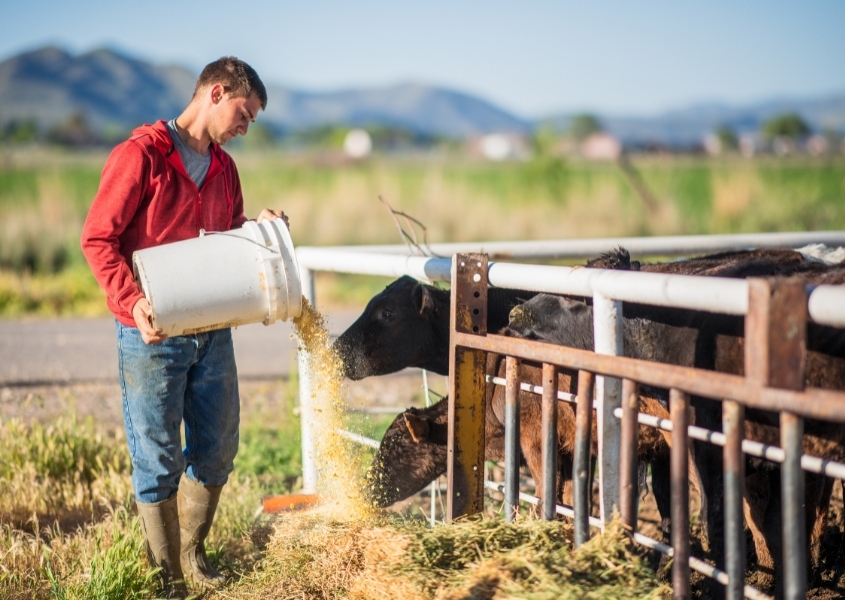Essential meetings with accountants, lawyers, contractors, and advisors are part of running a farm, but do they really need to steal so much of your valuable time? The good news is, you can shorten external meetings to save hours that could be better spent driving your farm’s success or enjoying moments with your family. Here’s how:
Seven (7) Proven Ways to Shorten External Meetings
1. Start with a Laser-Focused Agenda
The first step to reducing meeting time is clarity. Ask yourself: Why am I scheduling / committing to this meeting? Outline specific objectives and share them in advance with participants. A focused meeting not only saves time but also ensures actionable outcomes.
Example: Replace vague meeting invites like “Discuss financials” with “Review Q4 budget adjustments and tax planning for next season.”
Pro Tip: Limit each meeting to three primary objectives and share a time-boxed agenda.
2. Leverage Asynchronous Communication
Not all topics need to happen in real time. Tools like Loom or Outlook Mail allow you to communicate updates, share feedback, and explain tasks without gathering everyone into a single call or room.
Example: Record a quick Loom video summarising financial reports or compliance updates. Stakeholders can view it on their own time and reply with questions.
Benefit: Asynchronous communication respects everyone’s schedules and eliminates the need for back-and-forth scheduling.
3. Combine and Streamline Meetings
Farmers often deal with multiple external stakeholders. Instead of holding separate meetings for each, look for opportunities to combine them. For instance, invite your financial advisor and accountant to a single meeting focused on tax strategies and financial planning.
Why it works: Combining related discussions prevents duplication, improves alignment, and saves hours every month.
4. Use Digital Tools to Track Progress
Adopting task and project management tools like Smartsheet or Asana can minimise the need for regular check-in meetings. Use these platforms to assign tasks, monitor progress, and share updates with external stakeholders.
Example: Instead of meeting weekly with your contractor about ongoing projects, use a shared report on Smartsheet where they can update progress and flag issues.
Quick Win: Automate reminders and notifications within these tools to keep everyone on track without needing additional conversations.
5. Establish Time Boundaries
Meetings can sprawl when clear boundaries aren’t set. Designate specific time slots for external meetings and stick to them. Share your available days and time slots with stakeholders to align expectations and reduce interruptions during peak farming hours.
Pro Tip: Use scheduling apps like Calendly or SquareSpace Scheduling to set fixed time slots for meetings. Block out times for farm work, personal, or family.
6. Optimise Pre-Meeting Preparation
Many meetings run long because participants arrive unprepared. Avoid this by sending pre-meeting materials (e.g., reports, questions, or updates) and setting a clear expectation of prior-reading in advance. This ensures everyone arrives ready to make decisions quickly.
Example: For meetings with contractors, share a detailed task list or blueprint ahead of time to avoid lengthy explanations during the session.
Farmer’s Secret: Encourage stakeholders to submit their questions or concerns beforehand. Addressing these in a shared document often eliminates the need for a meeting entirely.
7. Regularly Question Meeting Necessity
Before scheduling a meeting, ask yourself, “Can this be resolved with a phone call, email, or digital update?” Farmers are action-oriented, and every unnecessary meeting takes valuable time away from the field or family.
Key Insight: A weekly 10-minute written update shared with stakeholders often suffices for progress reporting, cutting down significantly on recurring meetings.
Focus on What Matters Most
Implementing these strategies can help you shorten external meetings, giving you more time to focus on what truly matters—whether that’s improving your farm’s productivity or enjoying a barbecue with your family. Here are some added tips to take your time-saving efforts to the next level:

Use Technology as Your Ally
Farmers often hesitate to adopt new tools, but platforms like Zoom, Smartsheet, or even MS Teams can be game-changers. For instance, video conferencing can save hours of travel, while shared task management tools can centralise updates, minimising repetitive communication.
Adopt the 80/20 Rule
Apply the Pareto Principle to your meetings: 20% of the conversations drive 80% of the outcomes. Focus your discussions on the high-impact topics that truly move the needle.
Create a “Systems List”
Document repetitive meeting tasks or topics as part of a systems list. For example, standardise processes for financial reviews or compliance updates so future discussions are concise and streamlined.
Trust and Delegate
Empower your team to handle more responsibilities so you’re not the bottleneck for every external conversation. This might mean training someone to manage contractor relationships or preparing a team member to handle stakeholder updates.
Take Control of Your Schedule
Reducing the time spent on meetings is more than a productivity hack—it’s a step toward reclaiming the hours you need for strategic planning, farm operations, and personal priorities. By implementing even half of these strategies, you’ll find more space in your day for what truly matters.
Start small. Pick one or two strategies, like streamlining your next meeting with a pre-shared agenda, adopting a digital task management platform, or using a scheduling tool. These small, consistent changes can make a significant difference over time.
However, every farm is unique, and the best solutions are those tailored to your specific needs. That’s where Enable Ag can help.
Let’s find the approach that works best for you. Book a FREE 15-minute discovery session with one of our experts. Together, we’ll identify the strategies and tools that can transform your schedule and improve the efficiency of your time on your farm—and your life.
If you found this article helpful, share it with your network to help others unlock their farming potential. Don’t forget to like and follow us on social media for more insightful tips: Facebook, Instagram, and LinkedIn. Let’s empower more farmers together!

 Enable Ag
Enable Ag Enable Ag
Enable Ag
 Enable Ag
Enable Ag
 Enable Ag
Enable Ag
